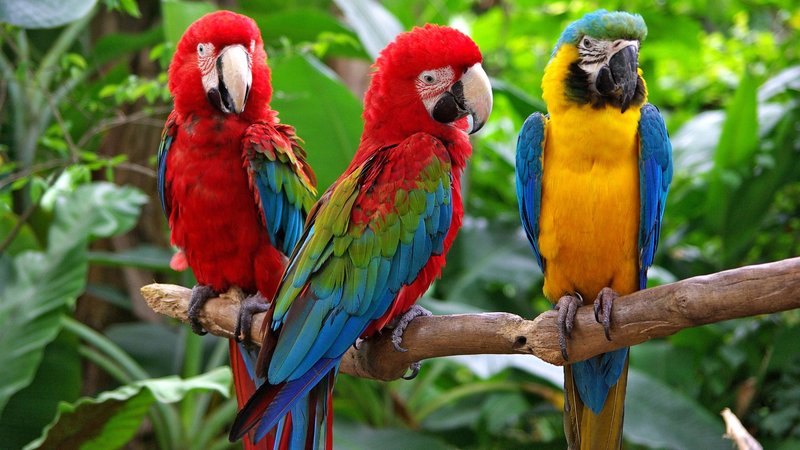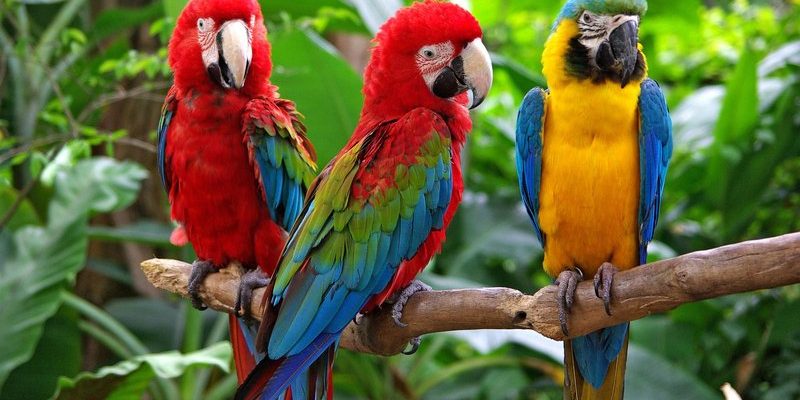
Macaws, with their striking colors and playful personalities, are often found in Central and South America. While they might seem like they belong in a tropical paradise, they also face harsh realities in their natural habitats. From the scorching sun in the Amazon rainforest to the challenges of finding food, these birds have developed unique ways to cope. Here’s the thing: understanding how macaws survive can give us a deeper appreciation for them and their ecosystems. Let me explain how these fascinating creatures navigate their sometimes unforgiving homes.
Physical Adaptations for Survival
Macaws are built for their environment. Their strong beaks are like nature’s tools, perfect for cracking open tough seeds and nuts. Have you ever tried to open a really hard nut with your hands? It’s tricky! But a macaw can do it effortlessly. This ability not only provides nourishment but also ensures they can access food sources that some other animals can’t.
Beyond their beaks, macaws have colorful feathers that serve a purpose. These vibrant colors help them camouflage in the dense foliage of their habitats. When perched among leaves and branches, the colors can blend in, making it harder for predators to spot them. Honestly, it’s like nature gave them a bright, feathered cloak to help them hide in plain sight!
Additionally, macaws possess strong legs and feet designed for gripping. Their feet are zygodactyl, meaning they have two toes pointing forward and two backward. This unique foot structure acts like a pair of hands, allowing them to grasp branches and climb with ease. So next time you see a macaw hanging upside down, know it’s more than just a cute pose—it’s survival in action!
Dietary Strategies in Tough Conditions
Macaws are not picky eaters, and that’s a good thing! Their diet primarily consists of seeds, fruits, and nuts. However, during the dry season or in areas where food is scarce, they adapt their diet accordingly. You might be wondering how they manage to find enough food when things get tough.
Firstly, macaws have an incredible memory that helps them locate food sources. They can remember where certain fruit trees are located and return to them when needed. Imagine having a built-in GPS for your favorite snack spots—that’s what these birds have! They also forage in groups, which allows them to cover more ground and share knowledge about where to find food.
In some regions, macaws have developed a penchant for eating clay. Yes, you read that right—clay! This might sound odd, but the clay helps neutralize toxins found in some seeds and fruits they eat. Additionally, it provides essential minerals that are important for their health. So, it’s like they’re having their own little health snacks right from the earth.
Social Behavior and Group Dynamics
Social structure plays a huge role in how macaws survive. They’re highly social birds and often live in flocks. This isn’t just for fun; being in a group provides safety. When they flock together, they can watch each other’s backs. If one macaw spots a predator, it can alert the others to escape.
Flocks also help with food finding. As mentioned earlier, macaws forage together and share what they discover. This social behavior strengthens their bonds and enhances survival. Just think about it—if you and your friends went out to eat, wouldn’t you be more likely to find the best deals together than alone?
These social dynamics also contribute to their mating behaviors. Macaws form long-term pair bonds, which means that once they find a mate, they often stay together for life. This stability is important not just for reproduction, but also for raising young in a supportive environment.
Nesting Habits and Reproductive Strategies
When it comes to raising chicks, macaws have some interesting strategies. They typically nest in tree cavities, which provides shelter and protection for their young. These nesting sites are crucial because they shield the chicks from predators and harsh weather.
The female macaw lays a small number of eggs, usually between two to four. This might not seem like a lot, but here’s the thing—raising chicks requires a lot of energy and care. Both parents take turns incubating the eggs and feeding the chicks once they hatch. This teamwork increases the chances that at least some of their young will survive to adulthood.
You might think, “What happens if they lose their nesting site?” Well, macaws are resilient. If a nesting site is destroyed, they can adapt and find another suitable hole. This flexibility is critical in environments where storms, deforestation, or other threats can disrupt their habitats.
Dealing with Predators and Threats
Survival in the wild isn’t just about finding food; it also means avoiding becoming someone else’s meal. Macaws face threats from various predators, including snakes, jaguars, and birds of prey. Their bright colors might attract attention, but they also serve as a warning. Many macaws are toxic due to their diet, making them unappetizing to potential predators. This is like having a built-in defense mechanism—if you know you’re not tasty, you can be a bit more bold in your choices.
One of their main defenses is their intelligence. Macaws are clever birds that can often outsmart threats. For instance, they’ll use alarm calls to warn other flock members about dangers. This communication helps ensure the safety of the group.
Additionally, when faced with danger, macaws can take to the skies quickly. Their powerful wings allow them to gain altitude and escape from ground threats. This speed and agility are vital for their survival—imagine being able to fly away from danger while someone else is still figuring out what to do!
Adaptations to Climate Change
As climate change impacts the environments where macaws thrive, these birds need to adapt just like every other species. Habitat loss and shifting weather patterns can make their lives more challenging. But guess what? Macaws are resourceful and have shown that they can adjust to new circumstances.
For example, some macaws have been observed expanding their range as they find new food sources in changing environments. They’re also showing more flexibility in their nesting habits, choosing new sites that may not be their traditional choices.
Conservation efforts are crucial in helping macaws deal with these changes. Protected areas and reforestation efforts can provide stable environments where macaws can continue to thrive. By working to understand and protect their habitats, we can help ensure that these colorful birds have a future.
The Importance of Conservation Efforts
Finally, let’s talk about the role of conservation in ensuring that these incredible birds continue to survive. Macaws face a variety of threats, including habitat loss due to deforestation and illegal trapping for the pet trade. Unfortunately, these pressures can devastate local populations and disrupt ecosystems.
Conservation organizations are actively working to protect macaws and their habitats. They engage in reforestation projects, create protected areas, and promote awareness about the importance of biodiversity. By educating communities and advocating for sustainable practices, they help ensure that macaws and other wildlife can thrive.
Supporting these initiatives is crucial. When we invest in conservation efforts, we’re not just protecting macaws but also entire ecosystems. Healthy environments benefit all species, including ourselves. So, the next time you see a macaw, remember how much work goes into helping them survive and thrive.
In conclusion, macaws are incredible survivors, adapting to harsh environments through a blend of physical traits, social behaviors, and dietary choices. Their ability to thrive in challenging conditions is a testament to nature’s resilience. As we learn more about these magnificent birds, let’s support efforts to protect them and the ecosystems they call home. After all, when we take care of our planet, we’re also taking care of ourselves.

